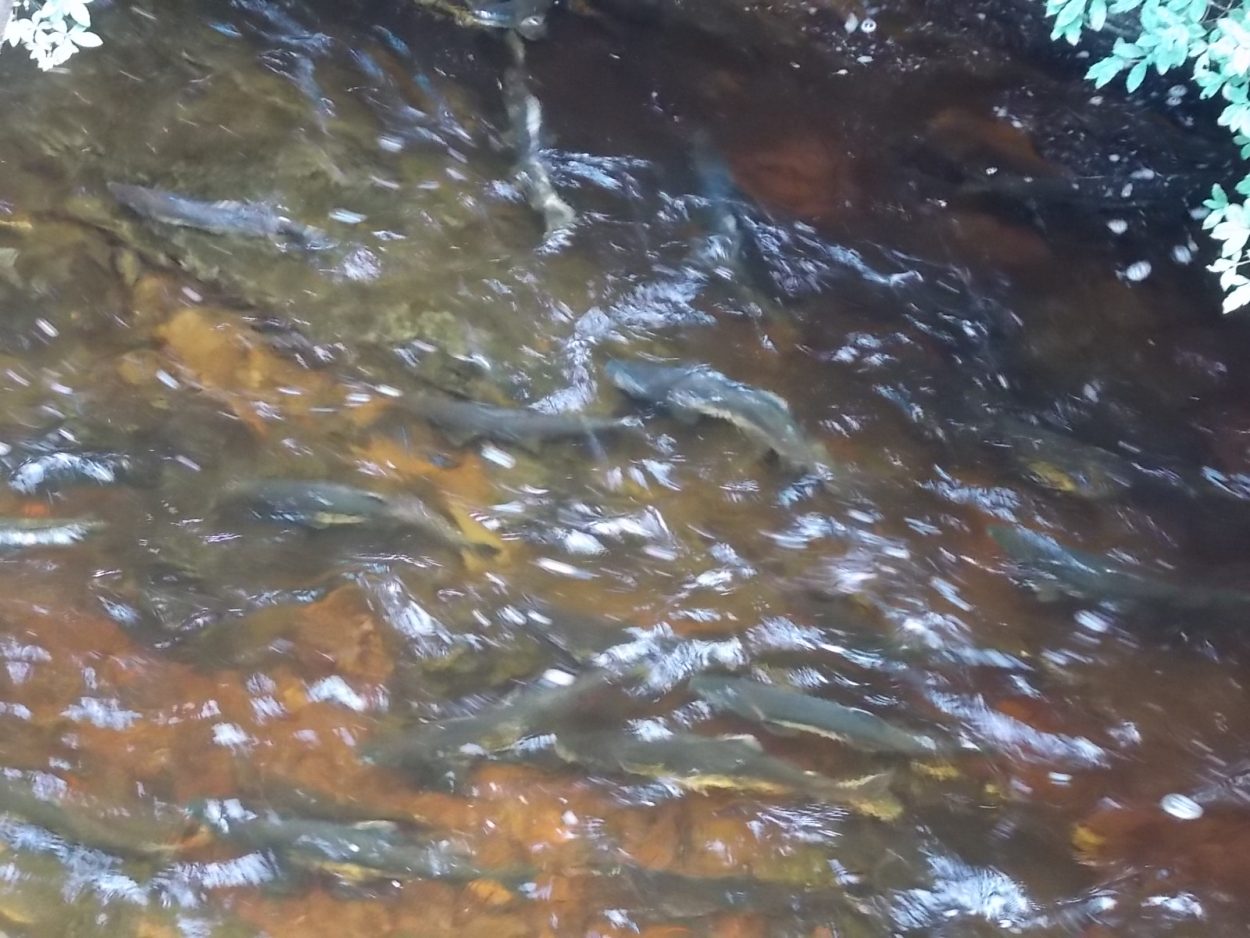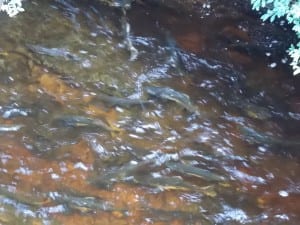The Alaska Department of Fish and game is forecasting a pink salmon harvest of 34 million fish for Southeast Alaska next summer.
That catch would be just below the 35 million caught in the region this year and would be below the 10-year average. It still falls in the “strong” category compared to commercial catches dating back to statehood.
“You know harvests back in the 60s and 70s for example were about on average about a quarter of harvests in the most recent decades,” said Andy Piston, Fish and Game’s pink and chum salmon project leader for Southeast. “So recently pink salmon have been at very high abundance levels. So while it’s strong historically. People hear that today and it’s a little below average for what, over the last couple decades what we’d expect.”
The department produces the forecast each year based on the trend in harvest. That number is adjusted with data from NOAA Fisheries’ annual trawl survey of outgoing juvenile pink salmon.
A real unknown in forecasting pink salmon in the past two years has been the unusually warm ocean water temperatures in the Gulf of Alaska. Fish and Game has been receiving widespread reports of unusual species of fish showing up in the normally cold water off Alaska, from albacore tuna to squid, shad, sunfish, bonito and pompano. The pink salmon that went to sea in 2014 and were expected to return in big numbers this past summer fell far short of the forecast. Piston said one reason could be the warmer water fish. “So that could certainly add increased competition for food,” he said. “It could add increased predation, as well as affecting virtually everything else in a pink salmon’s life cycle from possibly their range to their biological processes going on in the fish, their metabolism, things like that. So it throws a lot of uncertainty into the forecast for sure.”
Next year’s pinks were leaving Southeast streams in 2015 and likely ran into the same warm water conditions and southern fish species.
In addition, recent even year returns in 2014 and 2012 have seen low numbers of pinks in the northern Panhandle. Fish and Game expects that trend to continue next summer and another reason the forecast is below average.
Pinks have a two-year life cycle, with one year in fresh water streams followed by one year in the ocean. Their life cycle, shorter than other salmon, also makes them more difficult to forecast. Piston said other species like sockeye will have multiple ages returning in a year, giving future indicators of run strength. “But with pink salmon they’re all the same age, so they head out to sea. And then you don’t get any clues until they all return. And there’s just unmeasurable numbers of variables out there that could affect their survival, from fresh water to early marine and then out in the open ocean.”
Fish and game manages commercial fishing for pink salmon in-season, meaning fishing time can be adjusted based on the strength of the salmon run each summer. Pinks are targeted mainly by Southeast’s purse seine fleet and many are canned and sold in the U.S.













